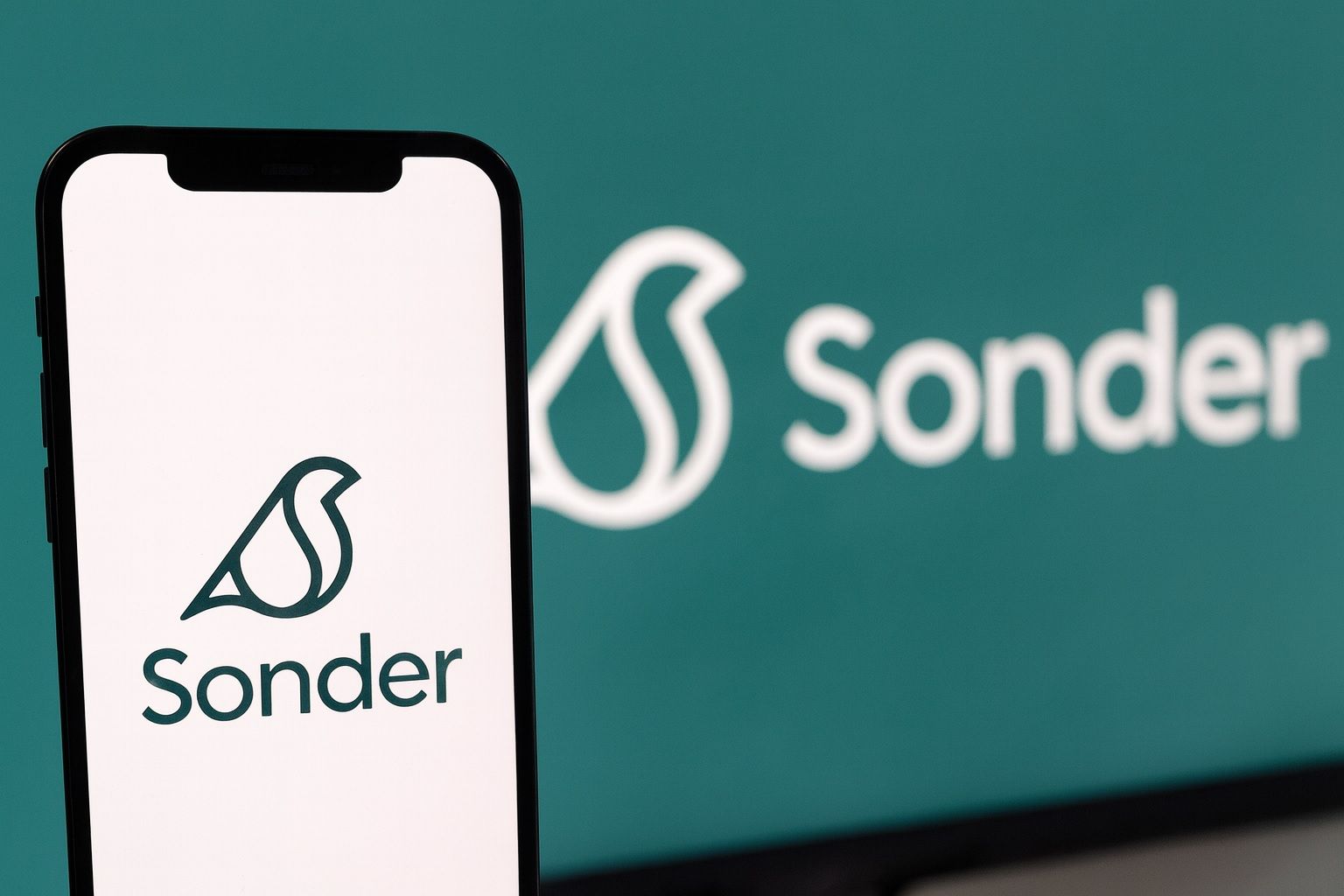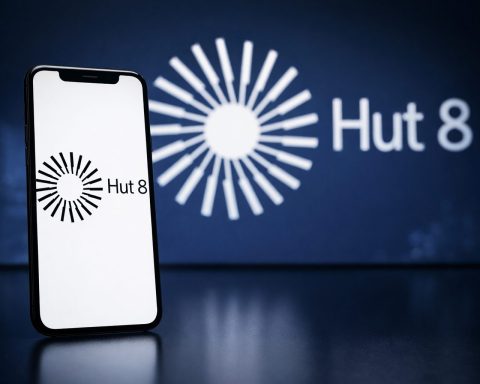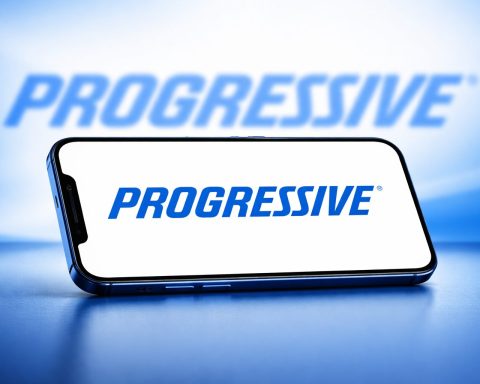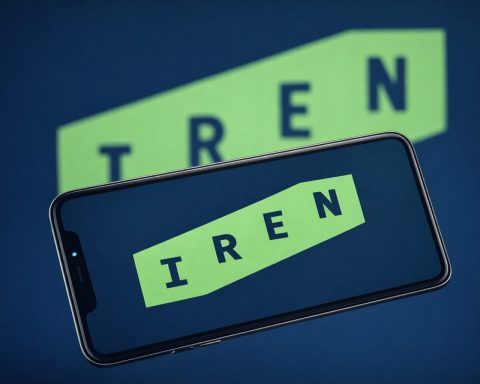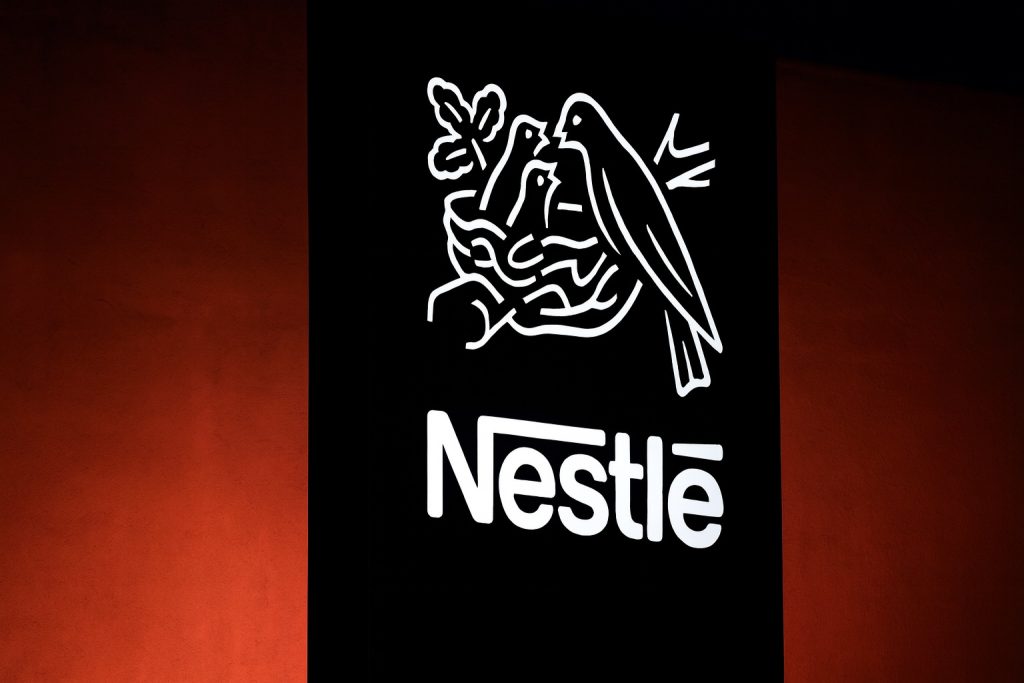- Stock Surges from Lows:Sonder Holdings Inc. (NASDAQ: SOND) spiked over 50% in pre-market trading on Oct. 16, 2025, jumping from yesterday’s $0.92 close to around $1.40 [1]. This rally follows a steep slide earlier in the week to all-time lows under $1, with SOND down ~20% in the past 5 trading days [2] and over 70% year-to-date [3].
- Mixed Q2 2025 Results: The Q2 2025 earnings, released Oct. 14 after delays, showed RevPAR up 13% YoY to $184 and occupancy at 85.5% (↑6.2 points), reflecting stronger unit economics [4]. However, revenue fell 11% YoY to $147.1 million and bookable nights plunged 21% as Sonder slashed its rental portfolio for efficiency [5] [6]. The quarter’s net loss was $44.5 million, a swing from a $32.7 million net profit in Q2 last year [7], highlighting ongoing financial challenges despite operational improvements.
- New Deals & Strategy: Sonder announced a partnership with TreviPay on Oct. 15 to launch “Sonder Billing,” a 30-day net invoicing program for corporate travelers [8]. This initiative, rolling out in the US, Canada, and UK, lets business clients book stays without upfront payment, aligning with corporate demand for flexible billing [9]. “Offering options like net terms can make the difference between a one-time booking and a long-term relationship,” said TreviPay CEO Brandon Spear [10], emphasizing how the program could boost Sonder’s corporate appeal. In Q2, Sonder also completed integration with Marriott’s platform, making all its properties bookable via Marriott Bonvoy channels [11] – a strategic move to widen its customer reach.
- Business Model & Financial Health:Sonder is a tech-enabled hospitality provider offering design-forward apartments and boutique hotels across 40+ markets globally [12]. It generates revenue from short-term rentals and hotels it operates, targeting modern travelers via a sleek app experience [13]. Despite rapid sales growth in recent years, the company’s finances remain strained – net margins are deeply negative (-52%) and liquidity is tight (current ratio 0.25) [14]. GuruFocus notes an Altman Z-Score of -3.0, placing Sonder in a “distress” zone with potential bankruptcy risk if conditions don’t improve [15]. Notably, auditors raised going-concern doubts earlier this year, and Sonder faced Nasdaq compliance notices for delayed filings [16], underscoring its precarious position.
- Analyst Sentiment & Outlook: Market sentiment around SOND remains cautious. Analysts have pulled back – Citigroup downgraded the stock to Neutral late last year [17], and others like Oppenheimer and JMP Securities cut ratings to “Perform” (Hold), even removing prior price targets [18]. TipRanks data shows a consensus “Hold” rating with an average 12-month price target of about $2.00 [19], implying significant upside from current levels but also reflecting the stock’s collapse. Heavy institutional ownership (over 90%) suggests some deep-pocket investors still have stakes [20], and technical indicators signal extreme overselling – SOND’s RSI recently hit ~19 [21]. This oversold status, combined with the new corporate billing partnership and Marriott tie-in, may be spurring speculative buying and hopes of a turnaround.
Stock Rebound After Hitting Record Lows
Sonder’s stock price is on a rollercoaster this week. On Wednesday, Oct. 15, SOND closed at $0.92, down nearly 4% for the day and extending a multi-day slump [22]. In fact, shares had crumbled about 20% just in the past week and nearly 45% over the past month [23], touching historic lows around $0.95. This precipitous decline has wiped out 75% of Sonder’s market value in the last year [24], and astonishingly, the stock now sits 97% below its levels of three years ago [25] (when the company went public via SPAC in 2021). The sell-off reflects investors’ concerns over liquidity and survival, as we discuss below.
However, Thursday morning brought a dramatic reversal. In pre-market trading on Oct. 16, SOND surged over 50%, leaping from under $1 to roughly $1.40 per share [26]. The catalyst appears to be a combination of bottom-fishing and reaction to the company’s latest updates (earnings and a new partnership). At one point, pre-market bids valued Sonder 52% higher than the prior day’s close [27]. Such volatility is not uncommon for micro-cap stocks like Sonder, which has a market cap near $12 million now [28] after this year’s plunge.
Market watchers note that Sonder’s trading volume spiked alongside the price jump, suggesting speculative traders may be piling in. The stock’s relative strength index (RSI) had fallen into the teens [29], a level considered “oversold” – often a setup for a technical bounce. Indeed, contrarian investors sometimes swoop in at such extreme lows, hoping for a short-term rebound or positive news. In Sonder’s case, the news did arrive this week in the form of long-delayed financial results and a promising new partnership for corporate bookings.
It’s worth noting that broader market conditions have been favorable for growth stocks recently. The Nasdaq Composite Index has rallied strongly over the past three years, rising nearly 90% since its 2022 lows [30], thanks to Big Tech gains. Yet Sonder’s trajectory has diverged sharply from the tech boom – a reminder that company-specific fundamentals ultimately drive performance. The question for investors is whether this week’s developments mark the beginning of a sustainable turnaround for Sonder, or just a temporary pop in a troubled stock.
Q2 Earnings: Revenue Slides, RevPAR Jumps as Portfolio Shrinks
On Oct. 14, Sonder Holdings finally released its second-quarter 2025 earnings, which had been delayed for months due to accounting issues. The results were a mixed bag, showcasing both encouraging operational metrics and concerning financial declines:
- Revenue: Q2 revenue came in at $147.1 million, down 11% year-over-year [31]. The drop in sales was expected, as Sonder has been intentionally slimming down its property portfolio under a “Portfolio Optimization Program.” The company has exited underperforming buildings and reduced rental units to focus on profitability. By end of June, live bookable units totaled ~8,300, a 19% YoY decrease [32], reflecting the deliberate pullback from costly leases. Fewer units naturally meant fewer room-nights to sell, hence the revenue decline.
- Bookings & Nights: Correspondingly, bookable nights were 798,000, down 21% YoY [33], as supply was curtailed. Sonder began 2024 by reducing room supply (exiting certain buildings and leases) as part of its turnaround strategy [34]. This strategy aims to improve margins by cutting out unprofitable locations, even at the expense of top-line growth.
- Occupancy & RevPAR: Crucially, the properties that remained in Sonder’s portfolio performed better on average. Occupancy rate climbed to 85.5%, up 6.2 percentage points from a year ago [35]. With more heads in beds and improved pricing, average daily rate (ADR) rose by $11 to reach $216, and revenue per available room (RevPAR) jumped 13% YoY to $184 [36]. These metrics indicate healthier unit economics: Sonder is filling more of its available rooms at higher prices, thanks in part to focusing on its best-performing locations. Higher RevPAR is a positive sign that the portfolio purge is yielding efficiency gains.
- Earnings/Losses: Despite better per-room results, Sonder remains deep in the red overall. The company reported a net loss of $44.5 million for Q2 [37]. This is actually an increased loss relative to the previous year’s unusual result – in Q2 2024, Sonder had a net income of $32.7 million [38], a figure likely boosted by one-time accounting adjustments or reversals (possibly related to correcting those “accounting errors” from 2022–2023). Excluding such anomalies, Sonder has historically been a loss-making startup, so the $44.5M quarterly loss underscores that profitability is still out of reach. On a brighter note, adjusted EBITDA improved significantly, coming in near break-even (around -$2.6M, an 83% YoY improvement, per the company) [39]. This suggests cost-cutting and efficiency efforts are narrowing the operating loss.
Management did not provide formal 2025 guidance in the press release, but commentary struck an optimistic tone. CEO Francis Davidson (who recently transitioned out of day-to-day leadership) and interim leaders emphasized continuing the portfolio optimization and partnerships to drive toward positive cash flow [40]. They highlighted the completed Marriott International integration during Q2 as a strategic milestone to boost bookings [41]. As of June, all Sonder properties became available on Marriott’s digital reservation platforms [42] – exposing Sonder’s inventory to Marriott Bonvoy’s huge customer base. This move could significantly raise occupancy and brand awareness, effectively letting Sonder piggyback on Marriott’s marketing engine.
It’s important to add that the Q2 report was delayed – Sonder had only released Q1 2025 results in late August after filing delays, and similarly pushed back Q2 into October. The company had disclosed in early 2024 that it discovered accounting errors related to lease asset valuations [43], requiring restatements and causing it to fall out of SEC filing compliance. That led to Nasdaq deficiency notices in the spring [44]. Now that Q2 is out (and the 10-Q filed on Oct. 14 [45] [46]), Sonder may return to timely reporting, but the episode raised governance concerns. In the Q2 filing, auditors again warned of “substantial doubt” about Sonder’s ability to continue as a going concern [47] given its financial pressures. This stark warning, along with the shrinking cash runway, likely weighed on the stock’s weakness prior to this week’s bounce.
New Partnership Targets Corporate Travelers
Amid the earnings reveal, Sonder also announced a new partnership aimed at boosting corporate travel business. On Oct. 15, the company and B2B payments platform TreviPay unveiled “Sonder Billing,” a program that lets approved corporate clients book stays at Sonder properties on 30-day net terms [48]. In essence, instead of paying with a credit card at check-in, a business traveler’s employer can receive an invoice and pay within 30 days, simplifying expense management. This is accompanied by VAT-compliant consolidated invoicing and centralized billing for stays across multiple employees [49].
The partnership is launching in the United States, Canada, and the UK initially [50], with plans to expand to other regions where Sonder operates. For Sonder – which has 9,000+ units worldwide ranging from apartment-style rentals to boutique hotel rooms [51] – the TreviPay deal is a strategic play to court corporate travel managers and companies booking extended stays or multiple units. “Business travel today demands consistency and convenience,” said Drew Parker, Sonder’s Director of Global Sales, adding that the TreviPay invoicing will “reduce payment friction” for corporate guests and encourage long-term client relationships [52].
From TreviPay’s perspective, the appeal is providing the financial infrastructure so Sonder gets paid on time while clients get flexibility. “By managing invoicing, credit and collections in the background, we provide the financial infrastructure that supports both guest satisfaction and operational efficiency,” TreviPay CEO Brandon Spear noted in the announcement [53]. This reflects a broader trend in hospitality: hotels seeking to remove friction for corporate bookings, which are rebounding as business travel recovers. According to industry research, global business travel spending is projected to reach new highs this year and exceed $2 trillion by 2029 [54]. Capturing even a sliver of that market could be meaningful for Sonder’s growth.
It’s also worth mentioning that Sonder has a strategic licensing agreement with Marriott (inked in 2024) which led to its integration into Marriott’s ecosystem [55]. Now being part of Marriott Bonvoy and offering corporate invoicing, Sonder is aligning itself more with traditional hotel conveniences, despite its roots as a tech-heavy upstart. These moves signal Sonder’s intent to attract business travelers and longer-term corporate housing deals, which tend to be higher-value and more stable than purely leisure bookings.
Beyond partnerships, Sonder took steps to shore up liquidity over the summer. In August, the company secured a $24.5 million promissory note and other financing to strengthen its balance sheet [56]. It also underwent a leadership shakeup – co-founder/CEO Francis Davidson stepped down as CEO in June, the CFO exited in August [57], and the board saw changes. These indicate a company in restructuring mode. The infusion of cash (albeit small) and cost cuts were likely necessary to keep Sonder operating into 2025. As of the last report, the company’s cash position and “cash-in-hand” metric aren’t clearly stated, but the low current ratio (0.25) suggests it may face liquidity crunches within a year [58]. Investors will be watching if additional capital raises or asset sales are needed, or if improved bookings (via Marriott and TreviPay initiatives) can stabilize the finances.
What Are Analysts Saying? Market Sentiment & Forecasts
Given Sonder’s penny-stock status and volatility, many Wall Street analysts have stepped to the sidelines. The stock currently has very limited analyst coverage. Major banks that once issued targets have gone quiet after a series of downgrades earlier in 2023. Notably, Citigroup downgraded SOND to Neutral (from Buy) in Dec 2023 [59], after adjusting its price target from $2 down to $1.50 in mid-2023 [60]. Other firms like JMP Securities and Oppenheimer also withdrew their bullish calls, both moving to equivalent Hold/Perform ratings by mid-2023 and dropping price targets [61] amid Sonder’s mounting risks.
As a result, the consensus rating for Sonder is now lukewarm. TipRanks reports an “Hold” consensus with only a couple of analysts still reporting estimates [62]. The average 12-month price target stands around $2.00 [63] per share – which implies over 100% upside from the ~$0.96 range where the stock was trading prior to the pre-market spike. However, this lofty percentage says more about how far the stock has fallen than about bullish conviction. In fact, some of these targets may be stale. Zacks Investment Research notes there are currently no active price targets on file for SOND [64]. MarketBeat similarly lists $0 as the “current price target” [65], effectively signaling an absence of fresh analyst guidance.
Market sentiment in forums and among retail investors is mixed. On one hand, the extreme drop in share price and “distressed” metrics have some bargain-hunters speculating that Sonder could be a turnaround play if it survives. The bull case hinges on the idea that Sonder’s asset-light, tech-driven model could eventually scale profitably, and that partnerships (Marriott, TreviPay) lend credibility. Additionally, the high institutional ownership (over 87% of float) [66] suggests that some large holders (possibly venture backers or SPAC sponsors) haven’t completely abandoned ship, which optimists interpret as a vote of confidence.
On the other hand, skeptics point to the grim fundamentals. Sonder’s Altman Z-Score of -3.02 is a glaring red flag, indicating a serious risk of bankruptcy within 2 years if things don’t improve [67]. Its debt-to-equity ratio is deeply negative (due to a shareholder deficit) [68] [69], and it’s burning cash with a large cumulative deficit. Momentum is clearly negative – the stock’s 12-month momentum is -74% according to TipRanks technicals [70]. Quant ratings give Sonder failing grades on Growth and Momentum (both “F” by one analysis [71]). In short, many see SOND as a risky speculative bet suitable only for risk-tolerant traders.
Looking ahead, the next major catalyst will be Sonder’s Q3 2025 earnings, scheduled for November 3, 2025 [72]. Investors will watch for continued progress on narrowing losses and whether revenue stabilizes now that the portfolio rightsizing is largely done. Any commentary on new financing or strategic alternatives (such as asset sales or even a buyout) would also be pivotal, given the cash concerns. Additionally, achieving Nasdaq compliance (by maintaining a share price above $1, for instance) is on the radar – if Sonder trades below $1 for too long, it risks delisting. The recent price pop to ~$1.40, if it holds, actually alleviates that particular issue (Nasdaq typically requires 10 consecutive days above $1 to cure a deficiency).
For now, Sonder remains a high-risk, high-reward story. The company has a unique business model blending tech and hospitality, with premium apartments and hotels in prime urban locations appealing to millennials and business travelers alike [73]. Its challenges – weak balance sheet, ongoing losses, and now a sub-$1 share price – are significant. But the steps management is taking (cost cuts, Marriott integration, corporate invoicing, fundraising) demonstrate an aggressive effort to engineer a turnaround. The stock’s wild swings this week encapsulate the uncertainty: investors are trying to gauge if Sonder can reinvent itself and survive.
With market sentiment cautious and analysts largely in wait-and-see mode, retail investors should approach SOND carefully. Volatility will likely remain high. Positive execution on partnerships and a clear path to profitability (or at least to positive EBITDA) would be needed to justify a sustained rebound. Otherwise, Sonder could be headed the way of many failed SPAC-era startups. In the near term, traders seem to be keying off any news – as evidenced by the 50% pre-market spike – making this a stock to watch for catalysts. Whether the current surge can hold will depend on concrete improvements in the quarters ahead, beyond the headline of a new partnership.
Sources: Key financial data and Q2 metrics from company filings [74] [75] and press releases; stock price and performance from Yahoo Finance/MarketBeat [76] and MarketScreener [77]; partnership details via Business Wire/StockTitan [78] [79]; business model and Marriott integration from TipRanks [80] [81]; analyst ratings from MarketScreener and TipRanks [82] [83]; GuruFocus analysis on financial health [84].
References
1. www.marketbeat.com, 2. www.marketscreener.com, 3. finviz.com, 4. www.businesstravelnews.com, 5. www.businesstravelnews.com, 6. www.businesstravelnews.com, 7. www.businesstravelnews.com, 8. www.stocktitan.net, 9. www.stocktitan.net, 10. www.stocktitan.net, 11. www.tipranks.com, 12. www.stocktitan.net, 13. www.stocktitan.net, 14. www.gurufocus.com, 15. www.gurufocus.com, 16. www.marketscreener.com, 17. www.marketscreener.com, 18. www.marketscreener.com, 19. www.tipranks.com, 20. finviz.com, 21. www.gurufocus.com, 22. www.marketbeat.com, 23. www.marketscreener.com, 24. finviz.com, 25. finviz.com, 26. www.marketbeat.com, 27. www.marketbeat.com, 28. www.stocktitan.net, 29. www.gurufocus.com, 30. ts2.tech, 31. www.businesstravelnews.com, 32. www.businesstravelnews.com, 33. www.businesstravelnews.com, 34. www.businesstravelnews.com, 35. www.businesstravelnews.com, 36. www.businesstravelnews.com, 37. www.businesstravelnews.com, 38. www.businesstravelnews.com, 39. www.tipranks.com, 40. www.tipranks.com, 41. www.tipranks.com, 42. www.tipranks.com, 43. www.businesstravelnews.com, 44. www.marketscreener.com, 45. www.stocktitan.net, 46. www.stocktitan.net, 47. www.marketscreener.com, 48. www.stocktitan.net, 49. www.stocktitan.net, 50. www.stocktitan.net, 51. www.stocktitan.net, 52. www.stocktitan.net, 53. www.stocktitan.net, 54. www.stocktitan.net, 55. www.tipranks.com, 56. www.stocktitan.net, 57. www.marketscreener.com, 58. www.gurufocus.com, 59. www.marketscreener.com, 60. www.marketscreener.com, 61. www.marketscreener.com, 62. www.tipranks.com, 63. www.tipranks.com, 64. www.zacks.com, 65. www.marketbeat.com, 66. www.stocktitan.net, 67. www.gurufocus.com, 68. www.gurufocus.com, 69. www.gurufocus.com, 70. www.tipranks.com, 71. www.aaii.com, 72. www.marketbeat.com, 73. www.tipranks.com, 74. www.businesstravelnews.com, 75. www.businesstravelnews.com, 76. www.marketbeat.com, 77. www.marketscreener.com, 78. www.stocktitan.net, 79. www.stocktitan.net, 80. www.tipranks.com, 81. www.tipranks.com, 82. www.marketscreener.com, 83. www.tipranks.com, 84. www.gurufocus.com
